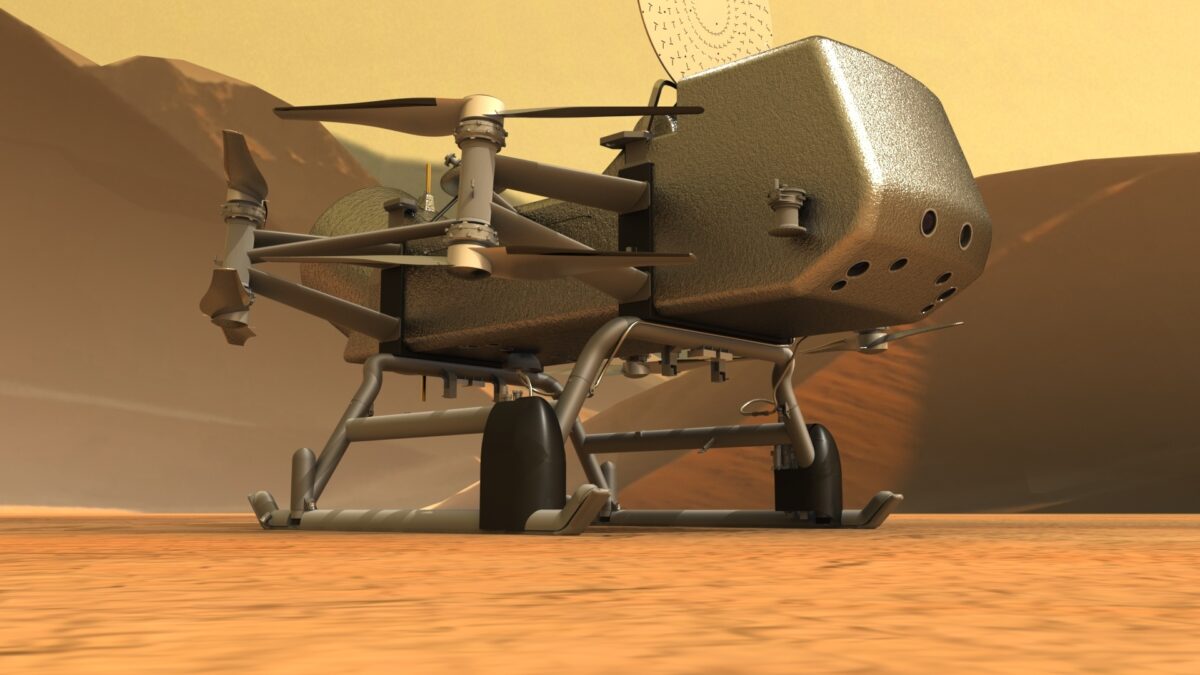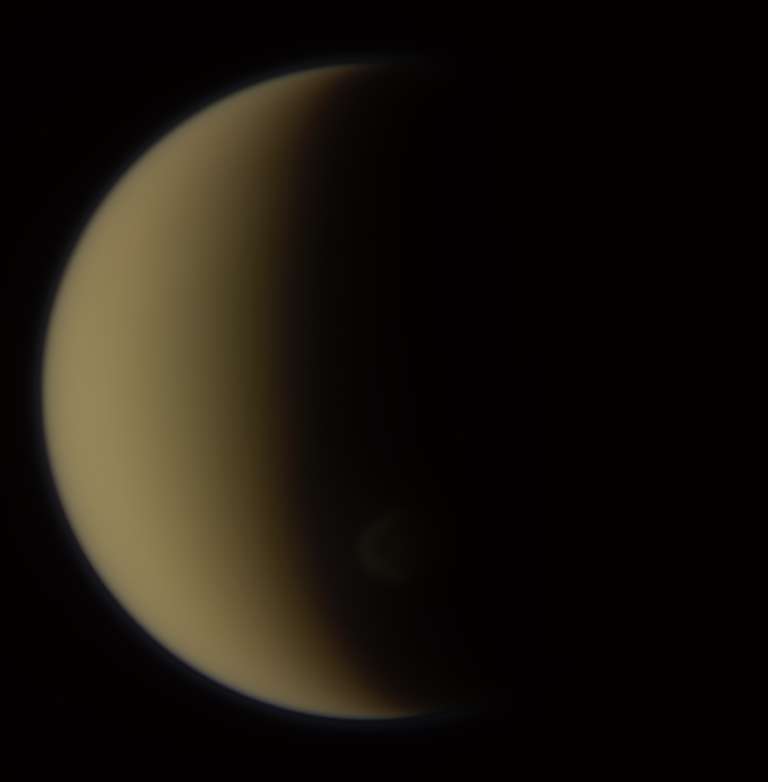Bryné Hadnott • Jul 13, 2021
How Dragonfly will explore Saturn’s ‘bizarro Earth’ moon, Titan
Why send a typical lander when you can send a dual-quadcopter?
That’s the question Dr. Elizabeth Turtle and her team at The Johns Hopkins University Applied Physics Laboratory asked when they developed NASA’s next New Frontiers mission to Saturn’s largest moon, Titan. The dual-quadcopter, aptly named Dragonfly, will carry a suite of instruments designed to analyze Titan’s surface, which can vary from pure water ice to crumbly, orange-tinted organic sands.
Over a series of flights throughout its three-year nominal mission, Dragonfly will hopscotch over Titan’s surface, investigating new places to visit and previously identified safe sites. Dragonfly’s science instruments include a gamma-ray and neutron spectrometer to analyze the elements beneath its ski-like legs, a UV light to detect fluorescent, organic molecules, and a mass spectrometer to analyze more complex, biologically relevant samples.

What will Dragonfly search for?
Of particular interest are samples from areas on Titan where the orange organics drifting out of Titan’s haze layer may have interacted with liquid water. Scientists have shown that when tholins, lab-generated organics similar to those on Titan, interact with liquid water, biomolecules such as amino acids and urea form.
On early Earth, it was this combination of organics and liquid water that gave rise to the diverse array of biomolecules and, eventually, life that thrives on Earth today.
Titan and Earth: an unlikely connection
Microfossils show evidence for single cellular microbes on Earth as early as the Eoarchean era 3.5 billion years ago. But as those early forms of life writhed under the young Sun, what kind of Earth did they experience?
Incredibly, Titan is the one other place in the solar system similar enough to early Earth that scientists — or the dual-quadcopter operated by them — can visit. Described as a sort of “bizarro Earth,” Titan has many features thought to have been present on early Earth as life started to develop: a nitrogen-rich atmosphere, a layer of orange haze in the sky, and maybe even the remnants of warm, shallow ponds inside of impact craters. The heat from an impactor hitting Titan’s surface can potentially create a shallow pond of liquid water inside of the newly formed crater that can last from 100 to 10,000 years depending on the crater’s size.
But Titan isn’t Earth’s identical twin. The Saturnian moon is about 10 times further from the Sun than Earth and has a surface temperature of a chilly -179 degrees Celsius (-290 degrees Fahrenheit). Instead of water, it rains liquid methane and ethane; instead of volcanoes spewing melted rock, Titan might have cryovolcanoes, pimples in the icy crust that seep liquid water from the ocean below.

Search for life
Life on Titan, if it exists or ever existed, would need to adapt to a life of Antarctic-like temperatures, near-constant twilight, and transient liquid water. What sort of life could possibly survive in such a hostile environment?
That’s exactly what Dragonfly aims to investigate by flying to Selk Crater, a geologically young impact crater just 800 kilometers (about 500 miles) north of where Cassini’s Huygens probe landed in 2005. As Dragonfly approaches the crater, passing over the saw-toothed dunes of the Belet field, its panoramic cameras will capture a scene that is eerily Earth-like. The raised icy rim, scalloped by millennia of erosion from the windblown sand nearby, encircles a 90 kilometer-wide (about 56 mile-wide) bowl in the icy crust. In every direction, river channels carve their way through Selk’s ejecta blanket, a layer of ice excavated during the crater’s formation when an impactor punched through Titan’s icy crust.
Descending towards the crater’s center, Dragonfly will hover over terraced cliffs sloping sharply down towards the central peak — a mini-mountain that spans nearly half of Selk’s 60 kilometer-wide (about 37 mile-wide) crater floor. After landing on the crater floor, Dragonfly will discover a confluence of all the different materials Titan has to offer — windblown organics from the Belet field, liquid hydrocarbons from the river channels, and water ice, refrozen after melting from impact heating.
Selk’s crater floor might have held a warm, wet pond when it formed and for a few hundred (or thousand) years after. Once Dragonfly arrives at Selk, scientists can use Dragonfly’s suite of instruments to search for prebiotic molecules — the building blocks of life as we know it — and determine how, or if, biomolecules are formed on Titan. By examining prebiotic chemistry on Titan, scientists will gain a better understanding of how biomolecules formed on early Earth, leading to advances in the study of life and how it arose.
Looking ahead
We’ll have to wait until 2037 for Dragonfly to land on Titan, but in the meantime, NASA scientists are hard at work investigating how aerial missions might look in the future. Ingenuity, the world’s most adorable scouting helicopter, successfully completed its technology demonstration and has flown several times at Mars’ Jezero Crater. Each hop, skip and jump brings us one step closer to Dragonfly’s debut.
Let’s Go Beyond The Horizon
Every success in space exploration is the result of the community of space enthusiasts, like you, who believe it is important. You can help usher in the next great era of space exploration with your gift today.
Donate Today

 Explore Worlds
Explore Worlds Find Life
Find Life Defend Earth
Defend Earth

